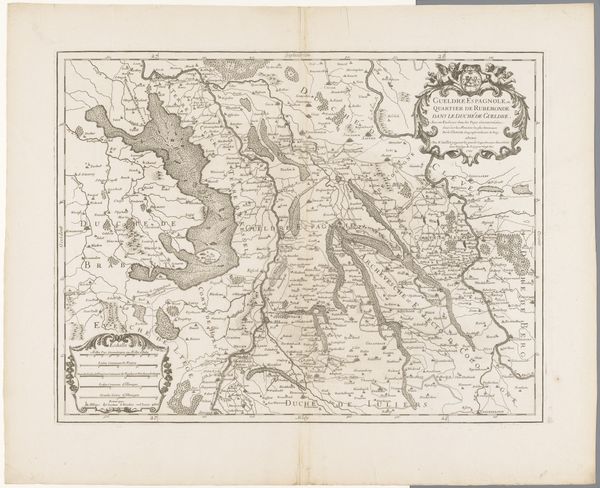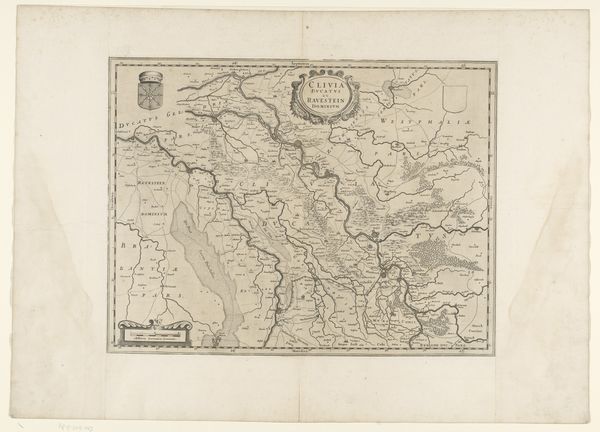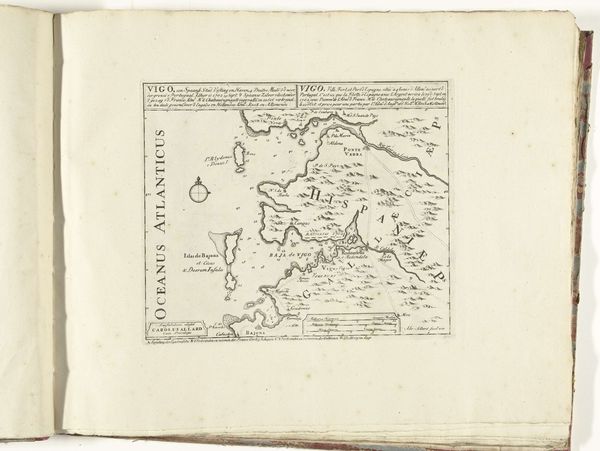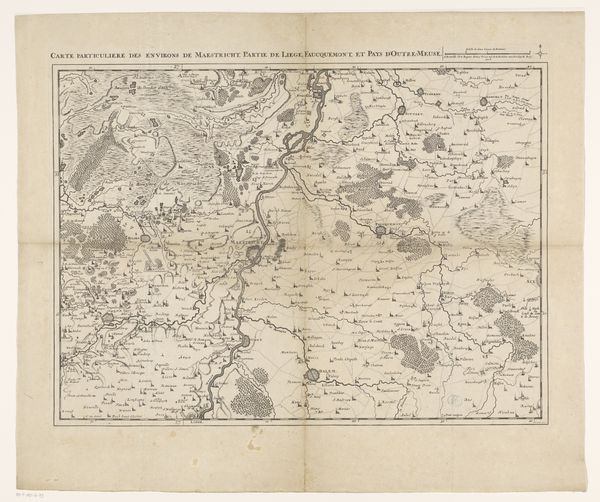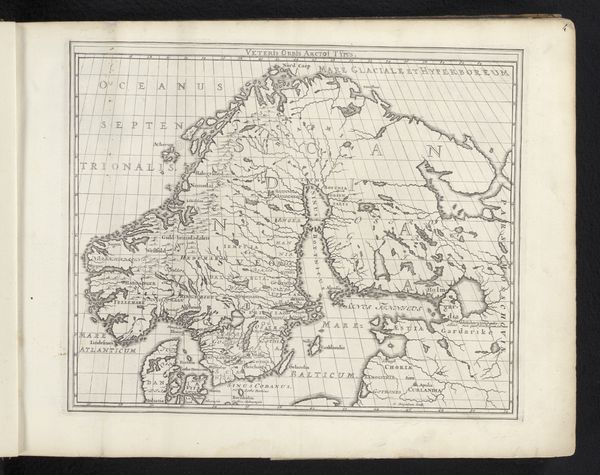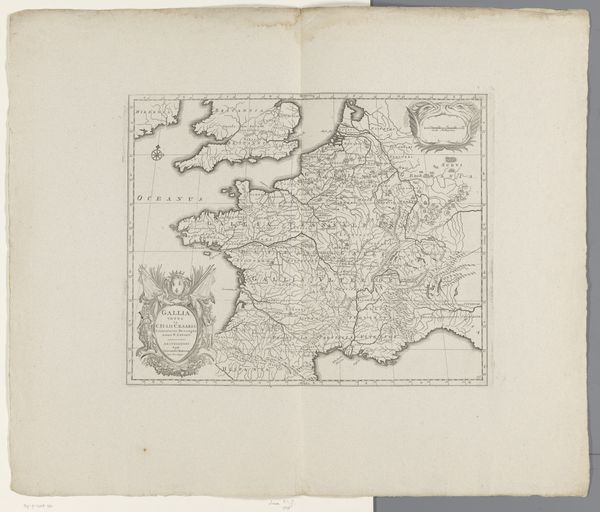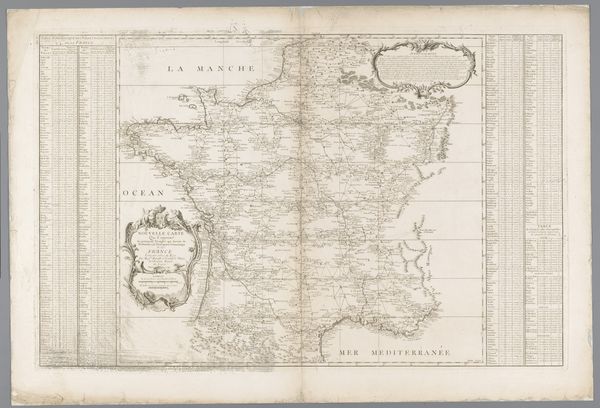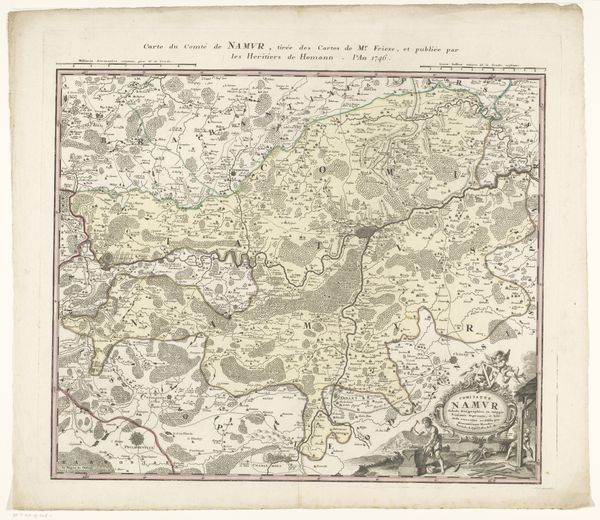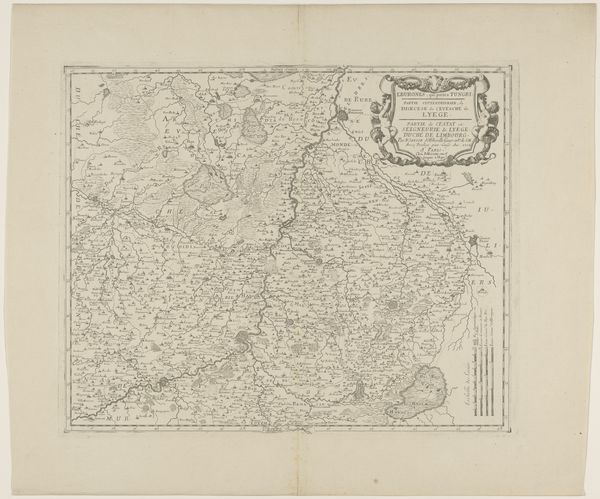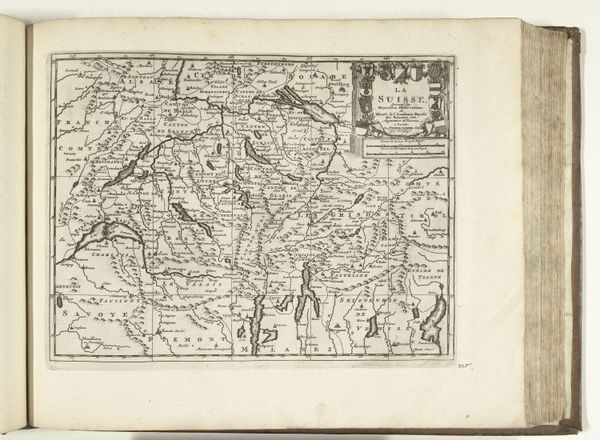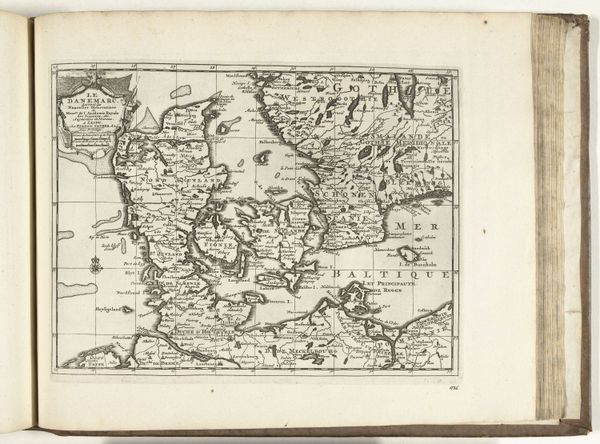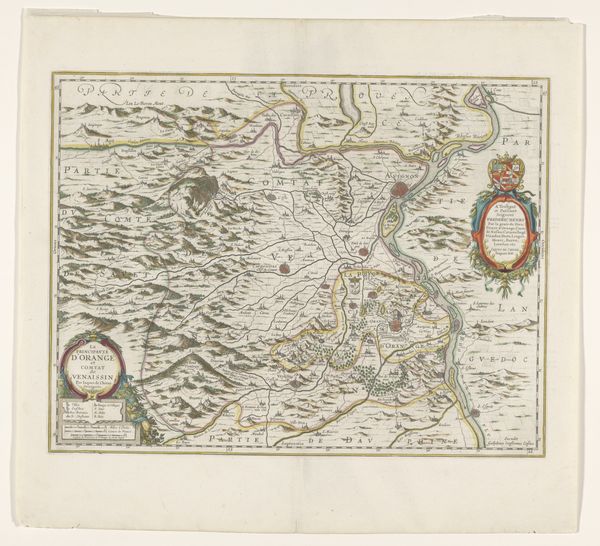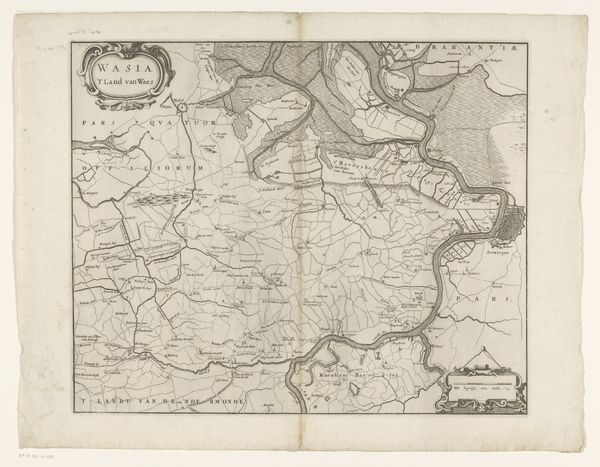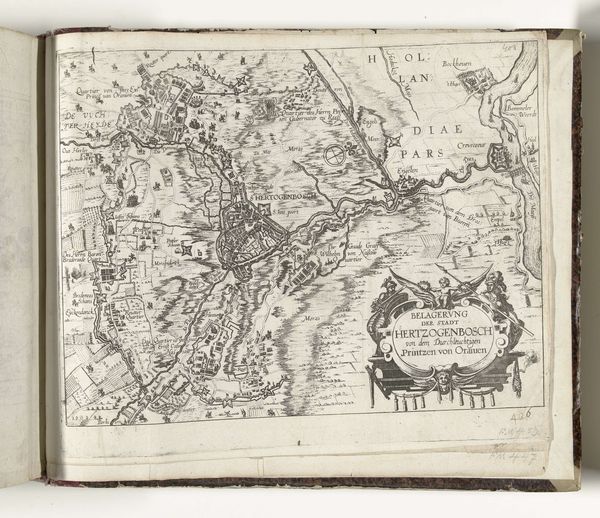
drawing, print, etching, paper, ink
drawing
baroque
etching
landscape
etching
paper
ink
geometric
Dimensions: height 430 mm, width 424 mm
Copyright: Rijks Museum: Open Domain
Editor: Here we have an etching, ink and paper drawing from 1703 titled "Kaart van het Overkwartier van Gelre," or "Map of the Upper Quarter of Guelders" by an anonymous artist, which strikes me as incredibly detailed. What’s your interpretation of this piece? Curator: I see a direct connection between the map and the social forces at play during its creation. Look at the etching technique. It was a relatively reproducible method that allowed for widespread dissemination of geographic information. Who needed this information and why? Editor: Presumably, authorities for administrative or military use? Curator: Exactly. Consider the paper itself, the ink used. Where did those materials come from? What sort of labor was involved in their production? These materials are not neutral; they are products of trade networks and specific skills, reflections of the baroque landscape style’s popularity, which spoke of power and control even in depicting landscapes. How might the proliferation of maps like these influenced land ownership and territorial disputes? Editor: So you're saying that the map itself, the object, is less about objective representation and more about the power dynamics embedded in its creation and use? It brings new dimension to thinking about the function of maps, more than geographic location! Curator: Precisely! The lines on this map aren't just geographical markers, they signify control and extraction. Think of the labour, the raw materials - the very *stuff* that went into making it - and what it all signifies about 18th-century society. Editor: That makes you look at something as straightforward as a map, and unpack the socioeconomic influences of the period. Very cool. Thanks! Curator: A pleasure, it's about seeing how things are MADE not just what they represent!
Comments
No comments
Be the first to comment and join the conversation on the ultimate creative platform.
